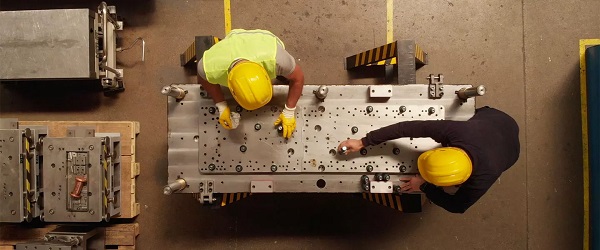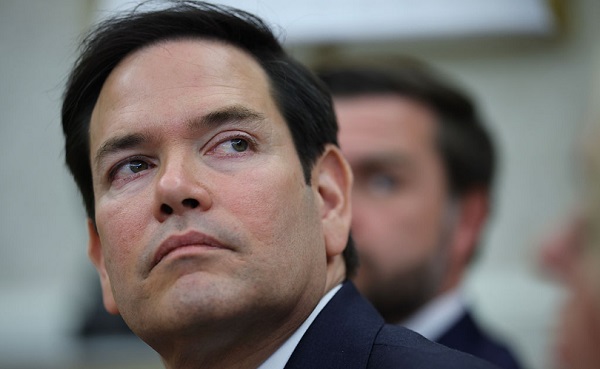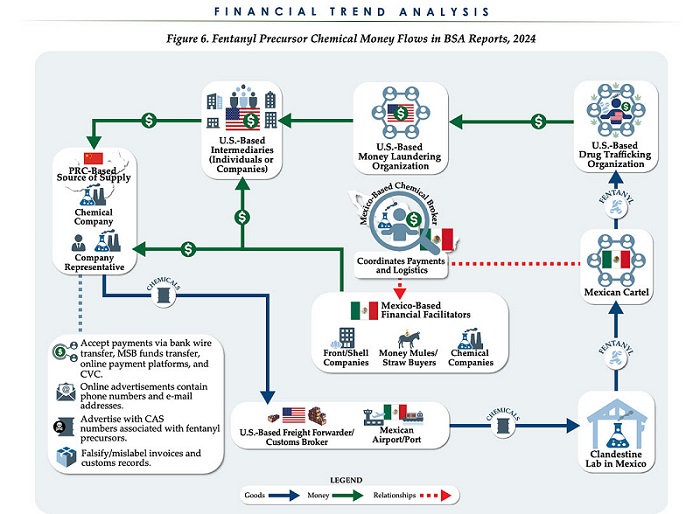Uncategorized
What is ‘productivity’ and how can we improve it

From the Fraser Institute
Earlier this year, a senior Bank of Canada official caused a stir by describing Canada’s pattern of declining productivity as an “emergency,” confirming that the issue of productivity is now in the spotlight. That’s encouraging. Boosting productivity is the only way to improve living standards, particularly in the long term. Today, Canada ranks 18th globally on the most common measure of productivity, with our position dropping steadily over the last several years.
Productivity is the amount of gross domestic product (GDP) or “output” the economy produces using a given quantity and mix of “inputs.” Labour is a key input in the production process, and most discussions of productivity focus on labour productivity. Productivity can be estimated for the entire economy or for individual industries.
In 2023, labour productivity in Canada was $63.60 per hour (in 2017 dollars). Industries with above average productivity include mining, oil and gas, pipelines, utilities, most parts of manufacturing, and telecommunications. Those with comparatively low productivity levels include accommodation and food services, construction, retail trade, personal and household services, and much of the government sector. Due to the lack of market-determined prices, it’s difficult to gauge productivity in the government and non-profit sectors. Instead, analysts often estimate productivity in these parts of the economy by valuing the inputs they use, of which labour is the most important one.
Within the private sector, there’s a positive linkage between productivity and employee wages and benefits. The most productive industries (on average) pay their workers more. As noted in a February 2024 RBC Economics report, productivity growth is “essentially the only way that business profits and worker wages can sustainably rise at the same time.”
Since the early 2000s, Canada has been losing ground vis-à-vis the United States and other advanced economies on productivity. By 2022, our labour productivity stood at just 70 per cent of the U.S. benchmark. What does this mean for Canadians?
Chronically lagging productivity acts as a drag on the growth of inflation-adjusted wages and incomes. According to a recent study, after adjusting for differences in the purchasing power of a dollar of income in the two countries, GDP per person (an indicator of incomes and living standards) in Canada was only 72 per cent of the U.S. level in 2022, down from 80 per cent a decade earlier. Our performance has continued to deteriorate since 2022. Mainly because of the widening cross-border productivity gap, GDP per person in the U.S. is now $22,000 higher than in Canada.
Addressing Canada’s “productivity crisis” should be a top priority for policymakers and business leaders. While there’s no short-term fix, the following steps can help to put the country on a better productivity growth path.
- Increase business investment in productive assets and activities. Canada scores poorly compared to peer economies in investment in machinery, equipment, advanced technology products and intellectual property. We also must invest more in trade-enabling infrastructure such as ports, highways and other transportation assets that link Canada with global markets and facilitate the movement of goods and services within the country.
- Overhaul federal and provincial tax policies to strengthen incentives for capital formation, innovation, entrepreneurship and business growth.
- Streamline and reduce the cost and complexity of government regulation affecting all sectors of the economy.
- Foster greater competition in local markets and scale back government monopolies and government-sanctioned oligopolies.
- Eliminate interprovincial barriers to trade, investment and labour mobility to bolster Canada’s common market.
Uncategorized
Poilievre on 2025 Election Interference – Carney sill hasn’t fired Liberal MP in Chinese election interference scandal

From Conservative Party Communications
“Yes. He must be disqualified. I find it incredible that Mark Carney would allow someone to run for his party that called for a Canadian citizen to be handed over to a foreign government on a bounty, a foreign government that would almost certainly execute that Canadian citizen.
“Think about that for a second. We have a Liberal MP saying that a Canadian citizen should be handed over to a foreign dictatorship to get a bounty so that that citizen could be murdered. And Mark Carney says he should stay on as a candidate. What does that say about whether Mark Carney would protect Canadians?
“Mark Carney is deeply conflicted. Just in November, he went to Beijing and secured a quarter-billion-dollar loan for his company from a state-owned Chinese bank. He’s deeply compromised, and he will never stand up for Canada against any foreign regime. It is another reason why Mr. Carney must show us all his assets, all the money he owes, all the money that his companies owe to foreign hostile regimes. And this story might not be entirely the story of the bounty, and a Liberal MP calling for a Canadian to be handed over for execution to a foreign government might not be something that the everyday Canadian can relate to because it’s so outrageous. But I ask you this, if Mark Carney would allow his Liberal MP to make a comment like this, when would he ever protect Canada or Canadians against foreign hostility?
“He has never put Canada first, and that’s why we cannot have a fourth Liberal term. After the Lost Liberal Decade, our country is a playground for foreign interference. Our economy is weaker than ever before. Our people more divided. We need a change to put Canada first with a new government that will stand up for the security and economy of our citizens and take back control of our destiny. Let’s bring it home.”
Uncategorized
Canada Needs A Real Plan To Compete Globally

From the Frontier Centre for Public Policy
Ottawa’s ideological policies have left Canada vulnerable. Strategic action is needed now
As Canada navigates an increasingly complex geopolitical landscape, the next federal government must move beyond reflexive anti—Americanism regardless of its political leanings. Instead, Canada should prioritize national interests while avoiding unnecessary conflict and subservience.
The notion that Canada can stand alone is as misguided as the idea that it is only an economic appendage of the United States. Both perspectives have influenced policy in Ottawa at different times, leading to mistakes.
Rather than engaging in futile name-calling or trade disputes, Canada must take strategic steps to reinforce its autonomy. This approach requires a pragmatic view rooted in Realpolitik—recognizing global realities, mitigating risks, governing for the whole country, and seizing opportunities while abandoning failed ideologies.
However, if Washington continues to pursue protectionist measures, Canada must find effective ways to counteract the weakened position Ottawa has placed the country in over the past decade.
One key strategy is diversifying trade relationships, notably by expanding economic ties with emerging markets such as India and Southeast Asia. This will require repairing Canada’s strained relationship with India and regaining political respect in China.
Unlike past Liberal trade missions, which often prioritized ideological talking points over substance, Canada must negotiate deals that protect domestic industries rather than turning summits into platforms for moral posturing.
A more effective approach would be strengthening partnerships with countries that value Canadian resources instead of vilifying them under misguided environmental policies. Expand LNG exports to Europe and Asia and leverage Canada’s critical minerals sector to establish reciprocal supply chains with non-Western economies, reducing economic reliance on the U.S.
Decades of complacency have left Canada vulnerable to American influence over its resource sector. Foreign-funded environmental groups have weakened domestic energy production, handing U.S. industries a strategic advantage. Ottawa must counter this by ensuring Canadian energy is developed at home rather than allowing suppressed domestic production to benefit foreign competitors.
Likewise, a robust industrial policy—prioritizing mining, manufacturing, and agricultural resilience—could reduce dependence on U.S. and Chinese imports. This does not mean adopting European-style subsidies but rather eliminating excessive regulations that make Canadian businesses uncompetitive, including costly domestic carbon tariffs.
Another key vulnerability is Canada’s growing military dependence on the U.S. through NORAD and NATO. While alliances are essential, decades of underfunding and neglect have turned the Canadian Armed Forces into little more than a symbolic force. Canada must learn self-reliance and commit to serious investment in defence.
Increasing defence spending—not to meet NATO targets but to build deterrence—is essential. Ottawa must reform its outdated procurement processes and develop a domestic defence manufacturing base, reducing reliance on foreign arms deals.
Canada’s vast Arctic is also at risk. Without continued investment in northern sovereignty, Ottawa may find itself locked out of its own backyard by more assertive global powers.
For too long, Canada has relied on an economic model that prioritizes federal redistribution over wealth creation and productivity. A competitive tax regime—one that attracts investment instead of punishing success—is essential.
A capital gains tax hike might satisfy activists in Toronto, but it does little to attract investments and encourage economic growth. Likewise, Ottawa must abandon ideological green policies that threaten agri-food production, whether by overregulating farmers or ranchers. At the same time, it must address inefficiencies in supply management once and for all. Canada must be able to feed a growing world without unnecessary bureaucratic obstacles.
Ottawa must also create an environment where businesses can innovate and grow without excessive regulatory burdens. This includes eliminating interprovincial trade barriers that stifle commerce.
Similarly, Canada’s tech sector, long hindered by predatory regulations, should be freed from excessive government interference. Instead of suffocating innovation with compliance mandates, Ottawa should focus on deregulation while implementing stronger security measures for foreign tech firms operating in Canada.
Perhaps Ottawa’s greatest mistake is its knee-jerk reactions to American policies, made without a coherent long-term strategy. Performative trade disputes with Washington and symbolic grandstanding in multilateral organizations do little to advance Canada’s interests.
Instead of reacting emotionally, Canada must take proactive steps to secure its economic, resource, and defence future. That is the role of a responsible government.
History’s best strategists understood that one should never fight an opponent’s war but instead dictate the terms of engagement. Canada’s future does not depend on reacting to Washington’s policies—these are calculated strategies, not whims. Instead, Canada’s success will be determined by its ability to act in the interests of citizens in all regions of the country, and seeing the world as it is rather than how ideological narratives wish it to be.
Marco Navarro-Génie is the vice president of research at the Frontier Centre for Public Policy. With Barry Cooper, he is co-author of Canada’s COVID: The Story of a Pandemic Moral Panic (2023).
-

 2025 Federal Election2 days ago
2025 Federal Election2 days agoBREAKING: THE FEDERAL BRIEF THAT SHOULD SINK CARNEY
-

 2025 Federal Election2 days ago
2025 Federal Election2 days agoCHINESE ELECTION THREAT WARNING: Conservative Candidate Joe Tay Paused Public Campaign
-

 International23 hours ago
International23 hours agoPope Francis’ body on display at the Vatican until Friday
-

 Media2 days ago
Media2 days agoCBC retracts false claims about residential schools after accusing Rebel News of ‘misinformation’
-

 International1 day ago
International1 day agoNew York Times publishes chilling new justification for assisted suicide
-

 conflict18 hours ago
conflict18 hours agoMarco Rubio says US could soon ‘move on’ from Ukraine conflict: ‘This is not our war’
-

 Business13 hours ago
Business13 hours agoChinese firm unveils palm-based biometric ID payments, sparking fresh privacy concerns
-

 2025 Federal Election1 day ago
2025 Federal Election1 day agoMark Carney Wants You to Forget He Clearly Opposes the Development and Export of Canada’s Natural Resources







